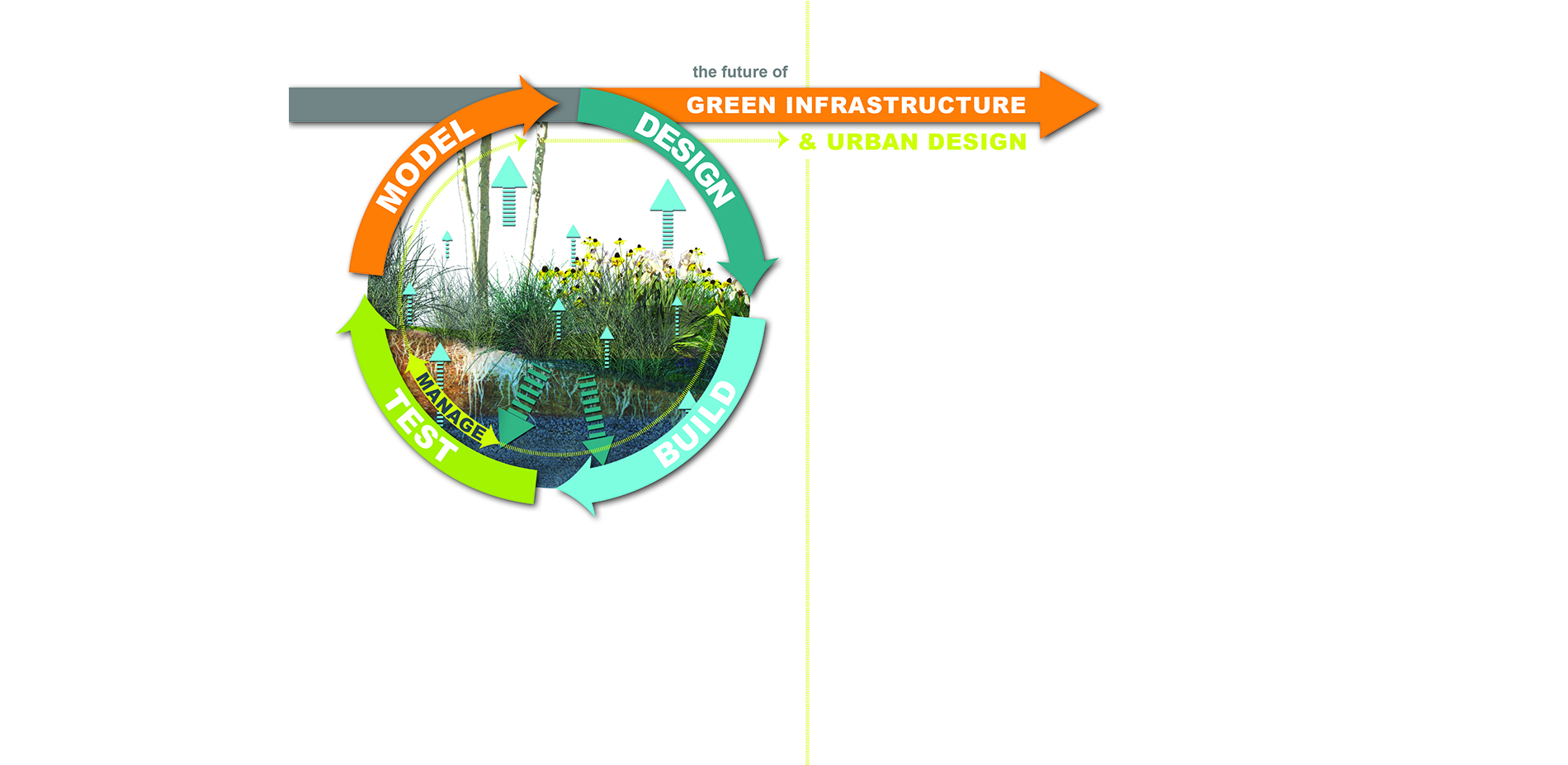
LIVING LABORATORY.
A recently completed 2.75-acre urban park set within a university campus was utilized as a testing ground to assess the performance of multiple green stormwater infrastructure (GSI) systems and to understand how an adaptive management strategy influences performance.
Photo Credit: Barrett Doherty and Andropogon
Media: Please submit high-resolution image requests to images@asla.org.
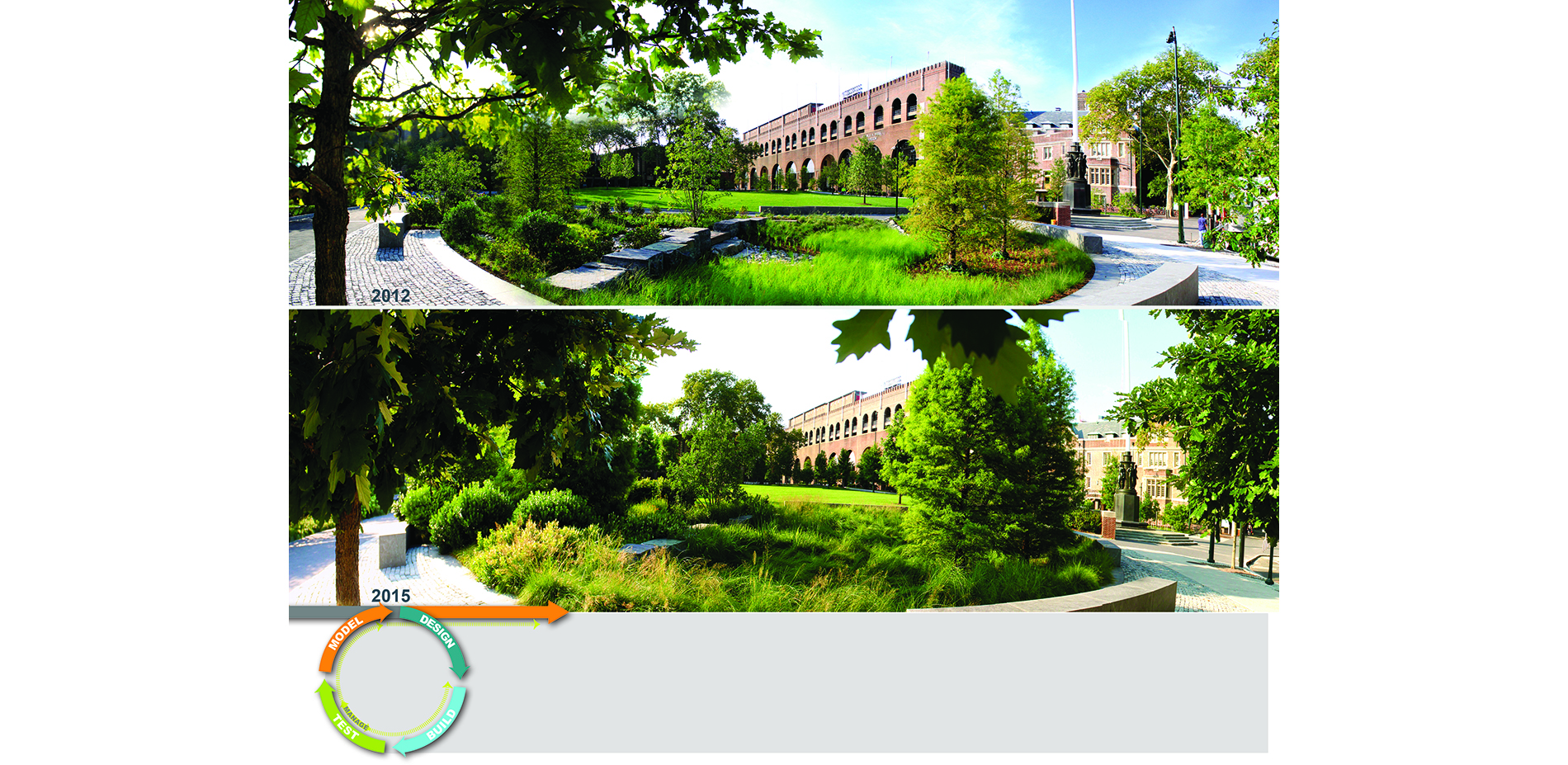
GREEN INFRASTRUCTURE PERFORMANCE.
Despite growing interest in GSI, there is a lack of research devoted to how integrated GSI elements, such as plant selection, soil enhancement, recycled-water irrigation, and adaptive management strategies, can be maximized to support performance.
Photo Credit: Barrett Doherty and Andropogon
Media: Please submit high-resolution image requests to images@asla.org.
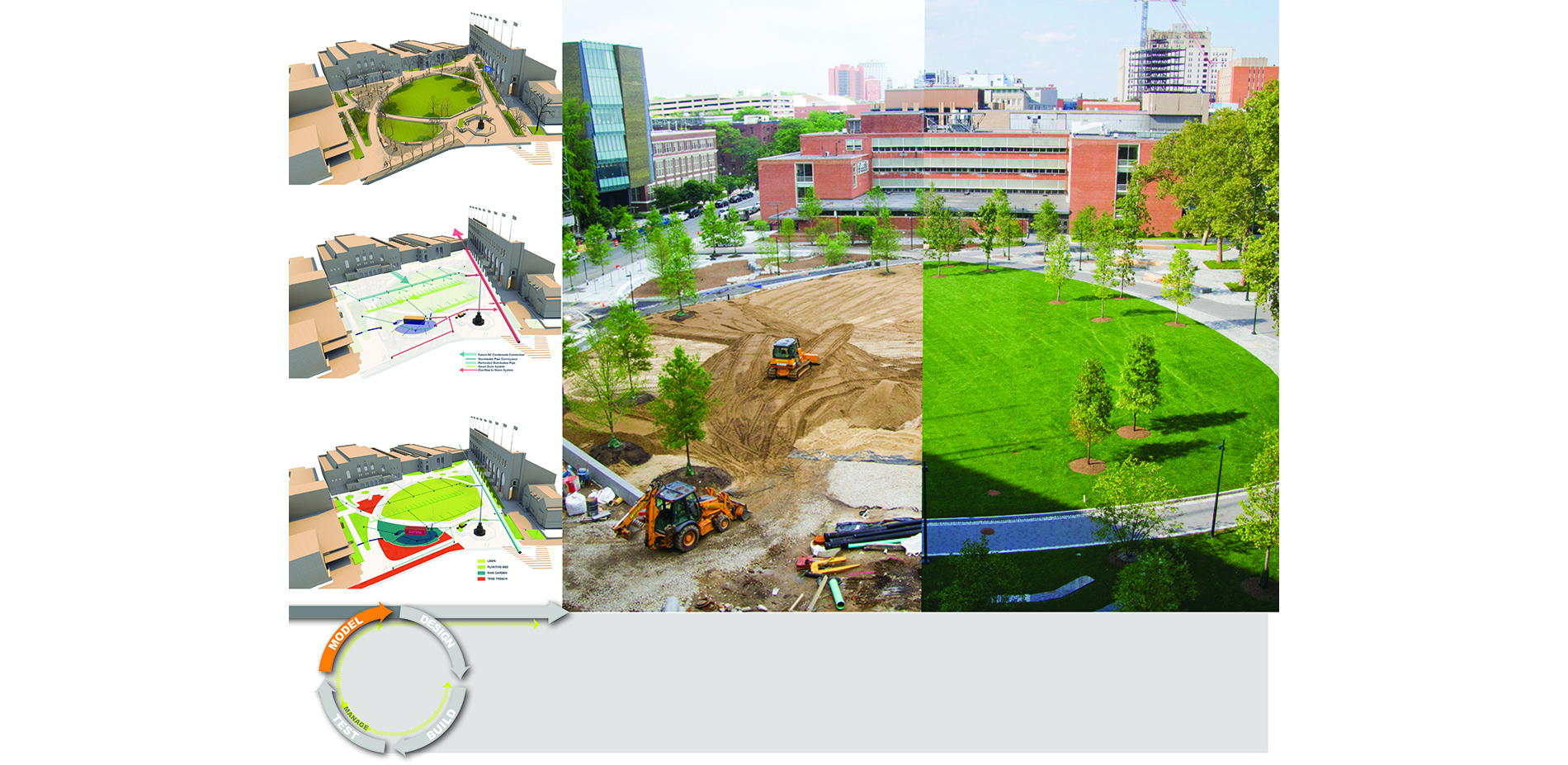
DESIGNED CAPACITY:
Designed to capture a minimum 1-inch storm event, per municipal requirements, key GSI components include: below-ground sand storage bed; engineered soils; an irrigation system that reuses stormwater and AC condensate via a cistern, native plants, and a rain garden.
Photo Credit: Barrett Doherty and Andropogon
Media: Please submit high-resolution image requests to images@asla.org.
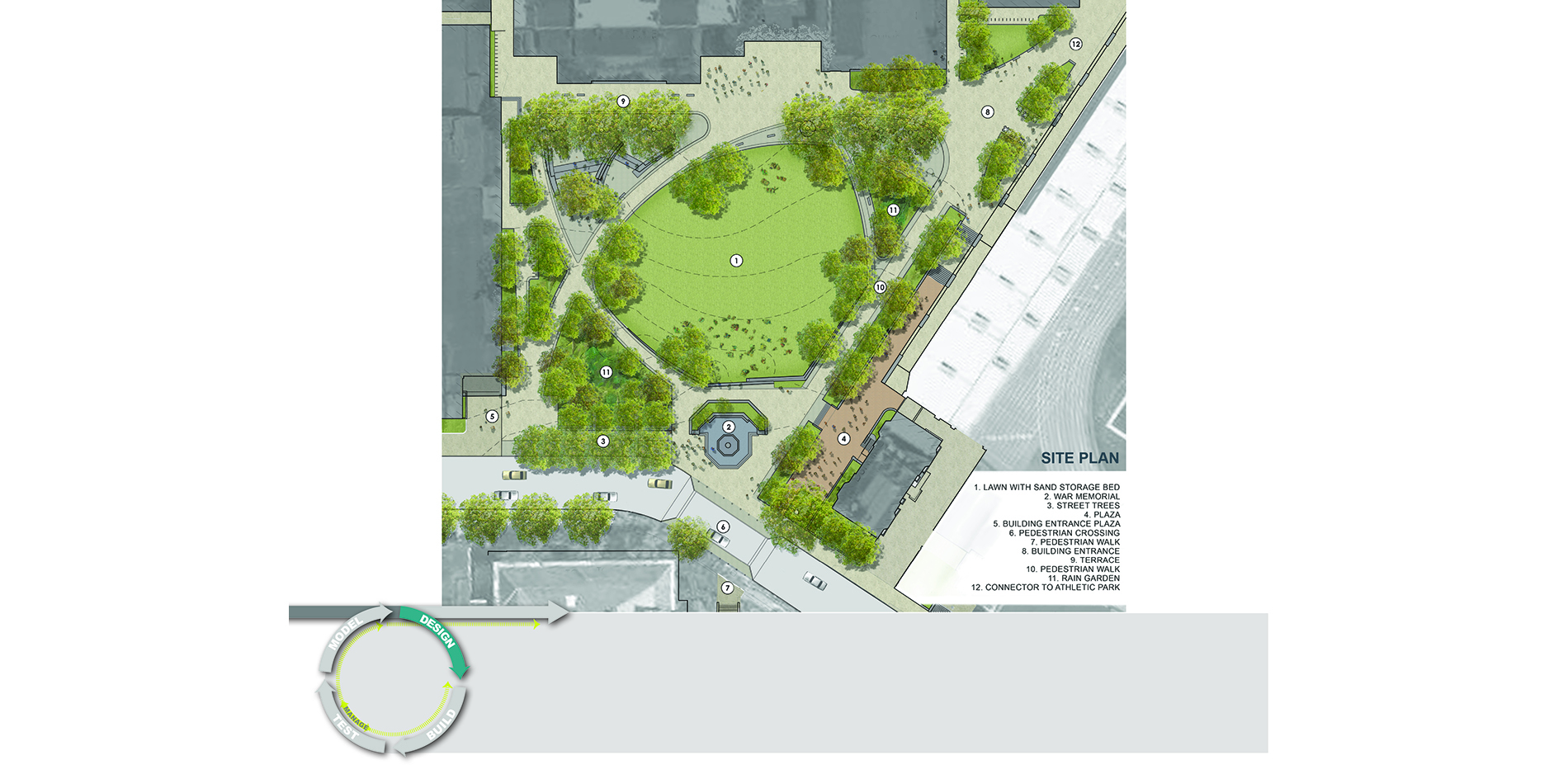
DESIGN AMENITY:
The park design centers on a large, semicircular green that is framed by sweeping, accessible pathways, offering respite from the dense, urban setting by providing a multitude of experiences for users to immerse themselves in nature.
Photo Credit: Barrett Doherty and Andropogon
Media: Please submit high-resolution image requests to images@asla.org.
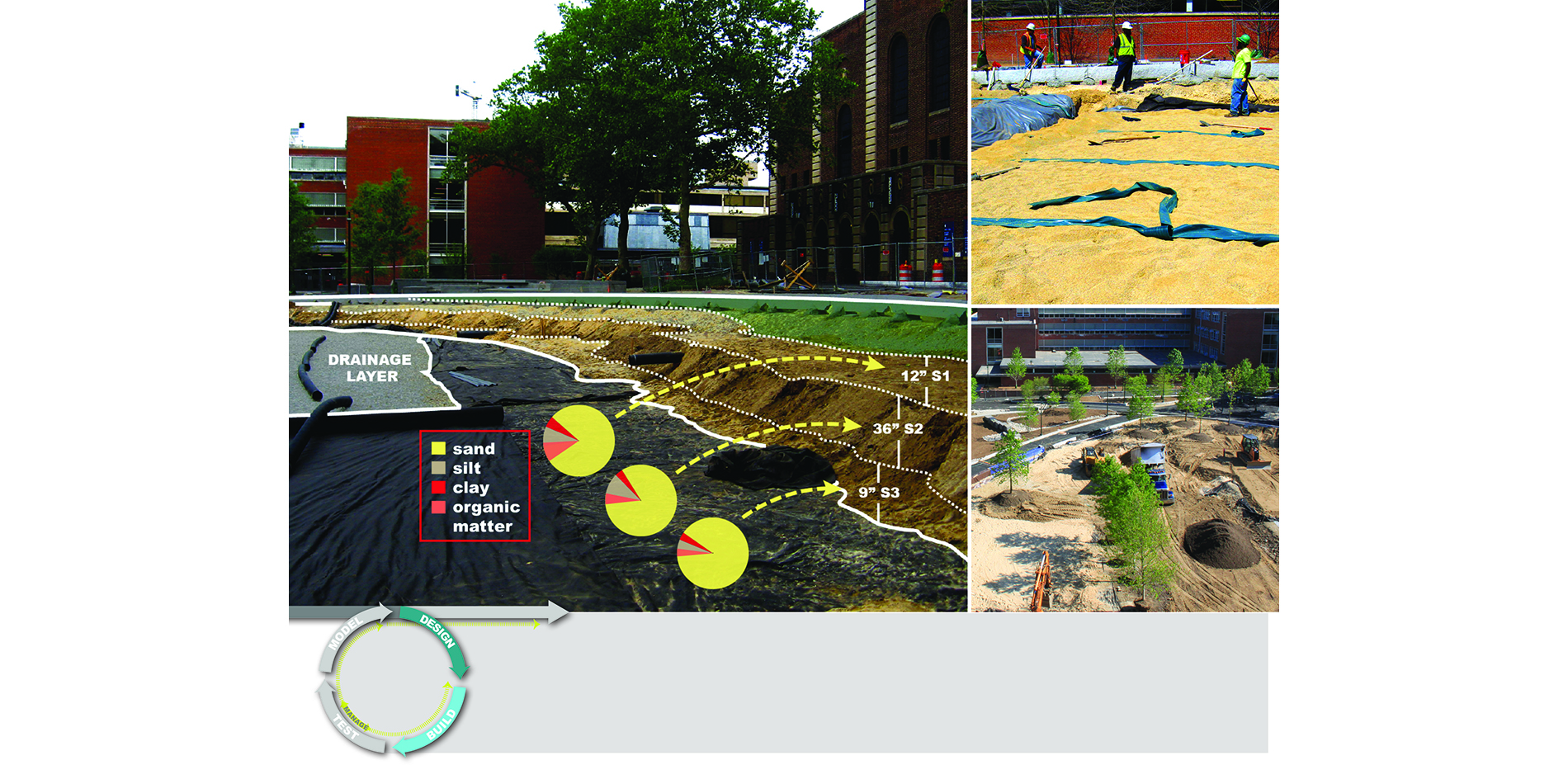
HIGH-PERFORMANCE SOILS:
The park’s largest GSI feature is engineered soils, including a 3-foot-deep storage bed below the lawn and specialized soils for the rain garden, landscape beds, and tree trenches. Soils are a mix of coarse sand and sandy loam with 3-5% organic matter.
Photo Credit: Barrett Doherty and Andropogon
Media: Please submit high-resolution image requests to images@asla.org.
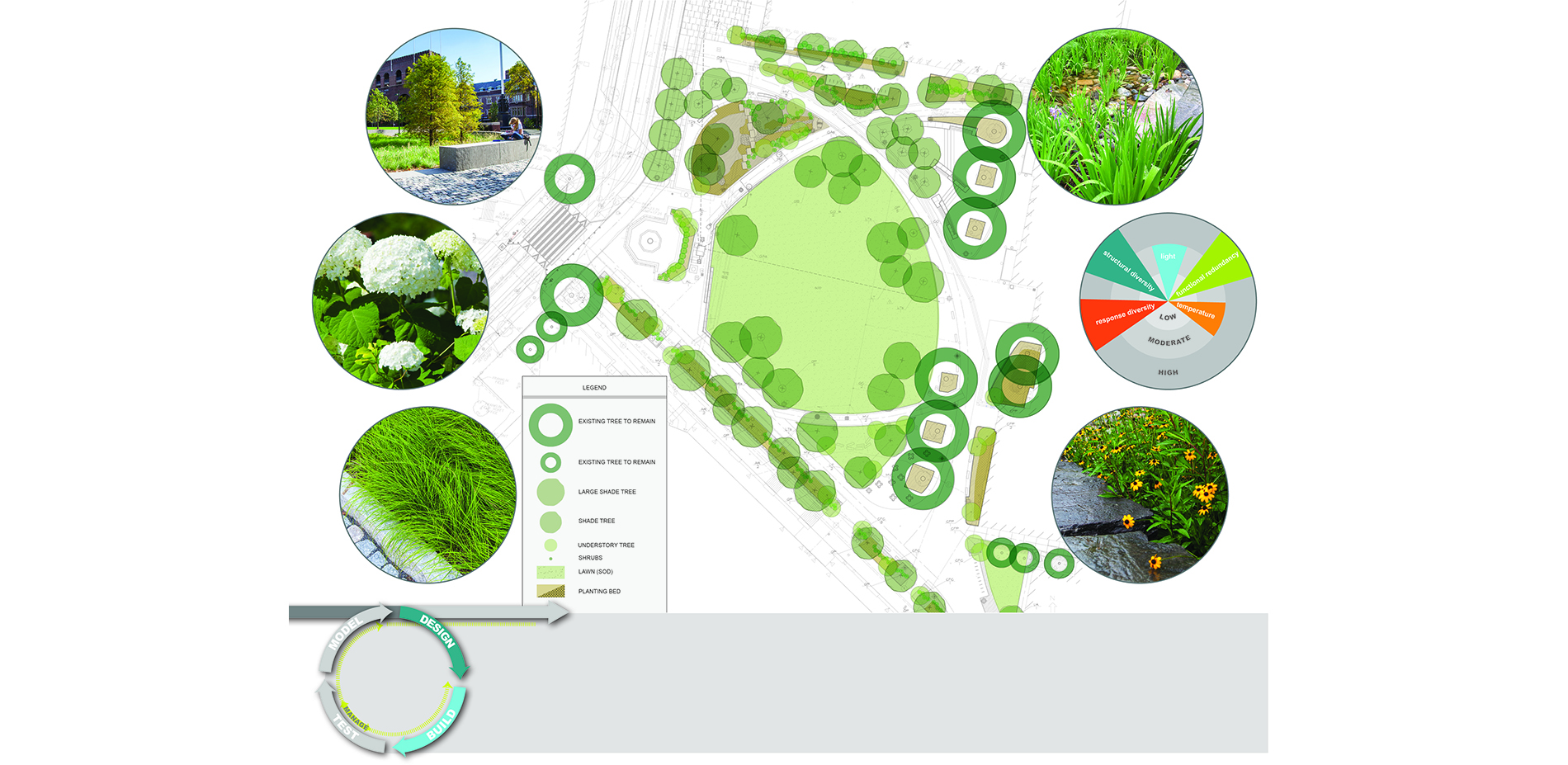
NATIVE PLANT OCMMUNITIES:
Vegetation was selected to provide diversity, habitat, resilience, and beauty throughout the seasons, as well as to serve as hard-working transpiration machines. The Delaware River Terrace and Piedmont Uplands ecoregions provided plant community inspiration.
Photo Credit: Barrett Doherty and Andropogon
Media: Please submit high-resolution image requests to images@asla.org.
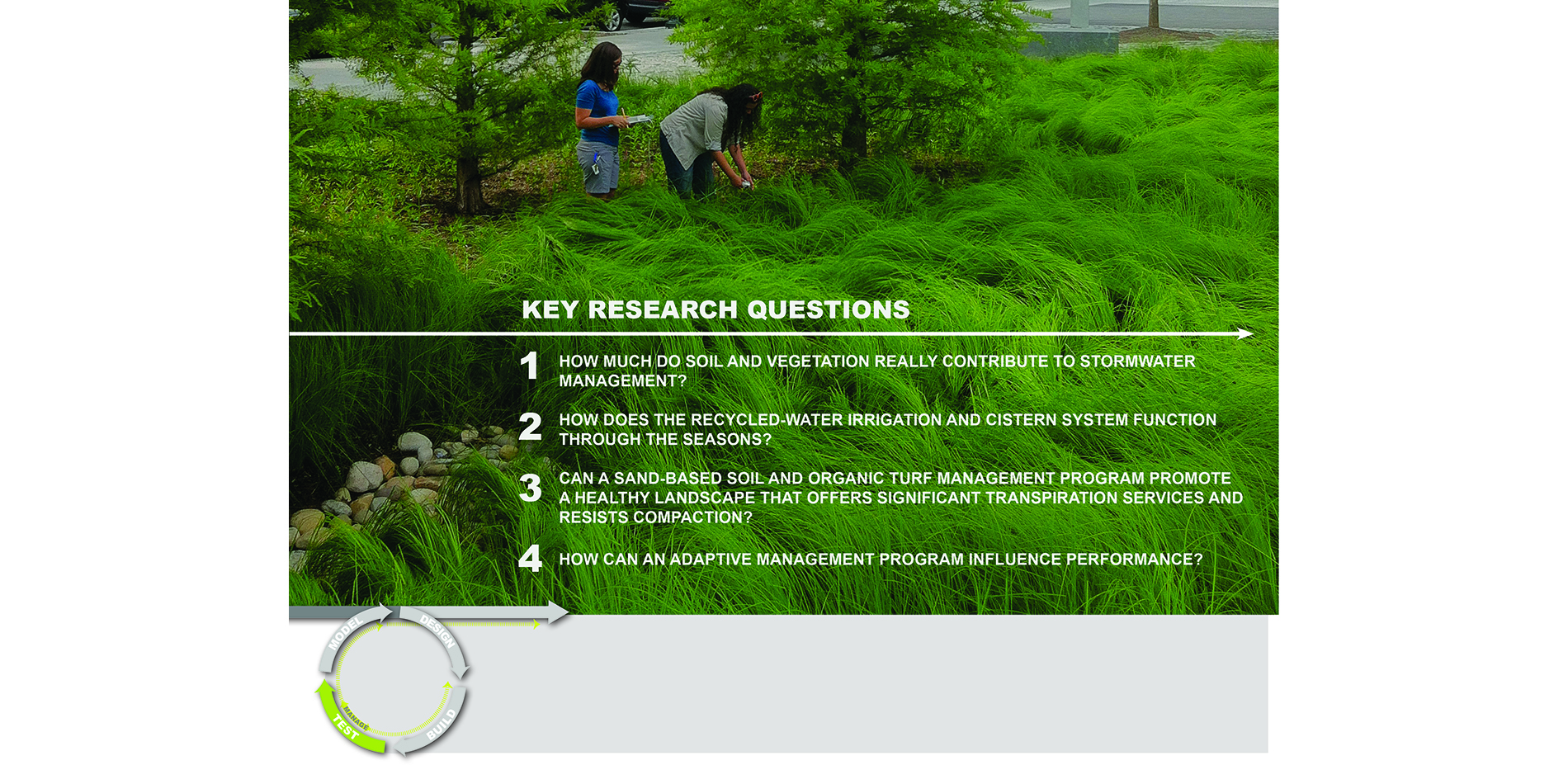
RESEARCH GOALS:
The research aimed to evaluate the engineering model assumptions of GSI performance within an urban setting and to provide feedback to the university’s facilities managers to improve campus-wide landscape performance.
Photo Credit: Barrett Doherty and Andropogon
Media: Please submit high-resolution image requests to images@asla.org.
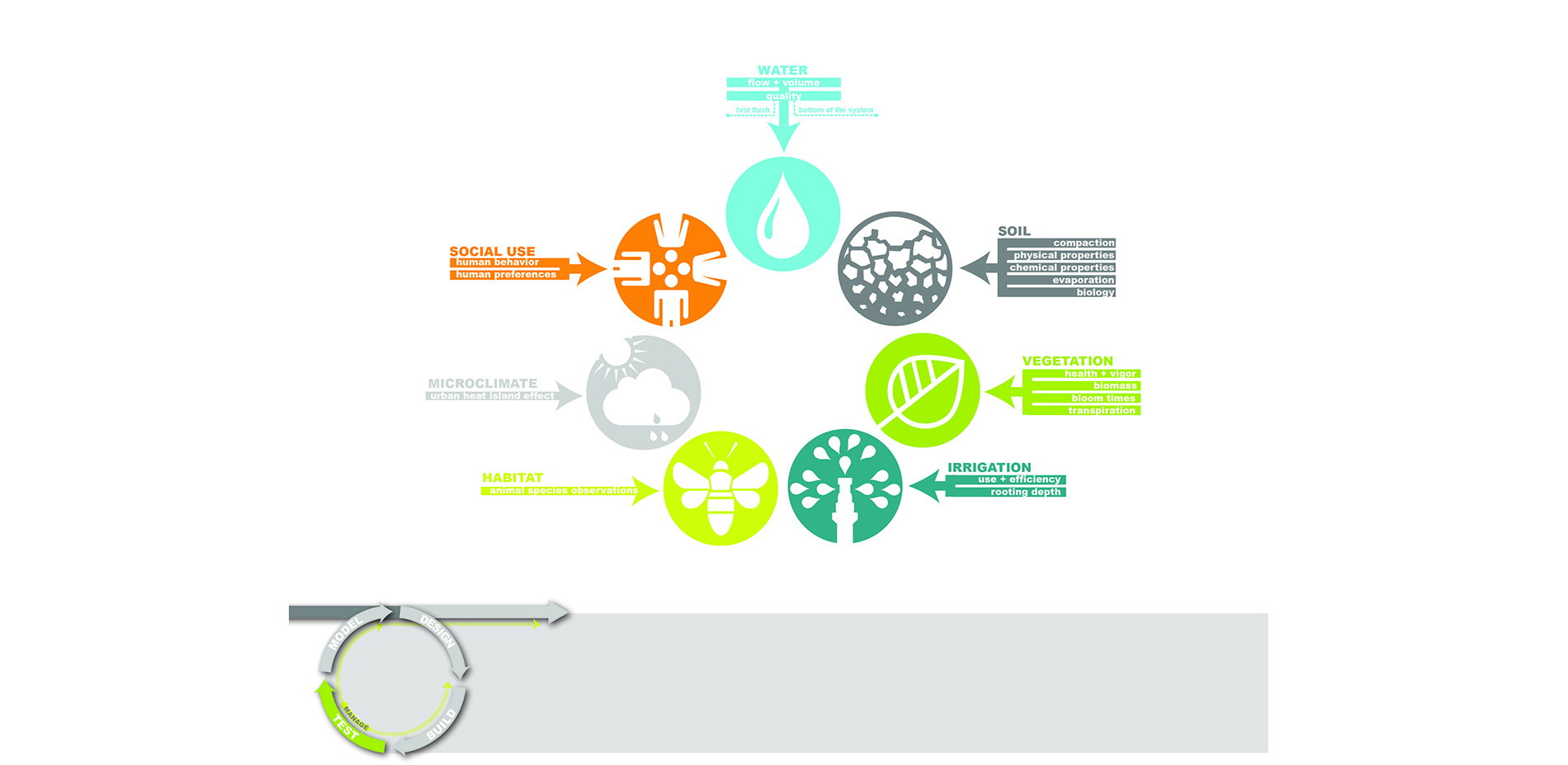
RESEARCH CATEGORIES:
Cost-effectiveness and accuracy were balanced when selecting both monitoring methods and instrumentation that were used to assess water (runoff volume, quality), soils (physical, chemical, biological), vegetation (vigor, size, turf rooting depth, transpiration) irrigation, habitat, microclimate, and human use.
Photo Credit: Barrett Doherty and Andropogon
Media: Please submit high-resolution image requests to images@asla.org.
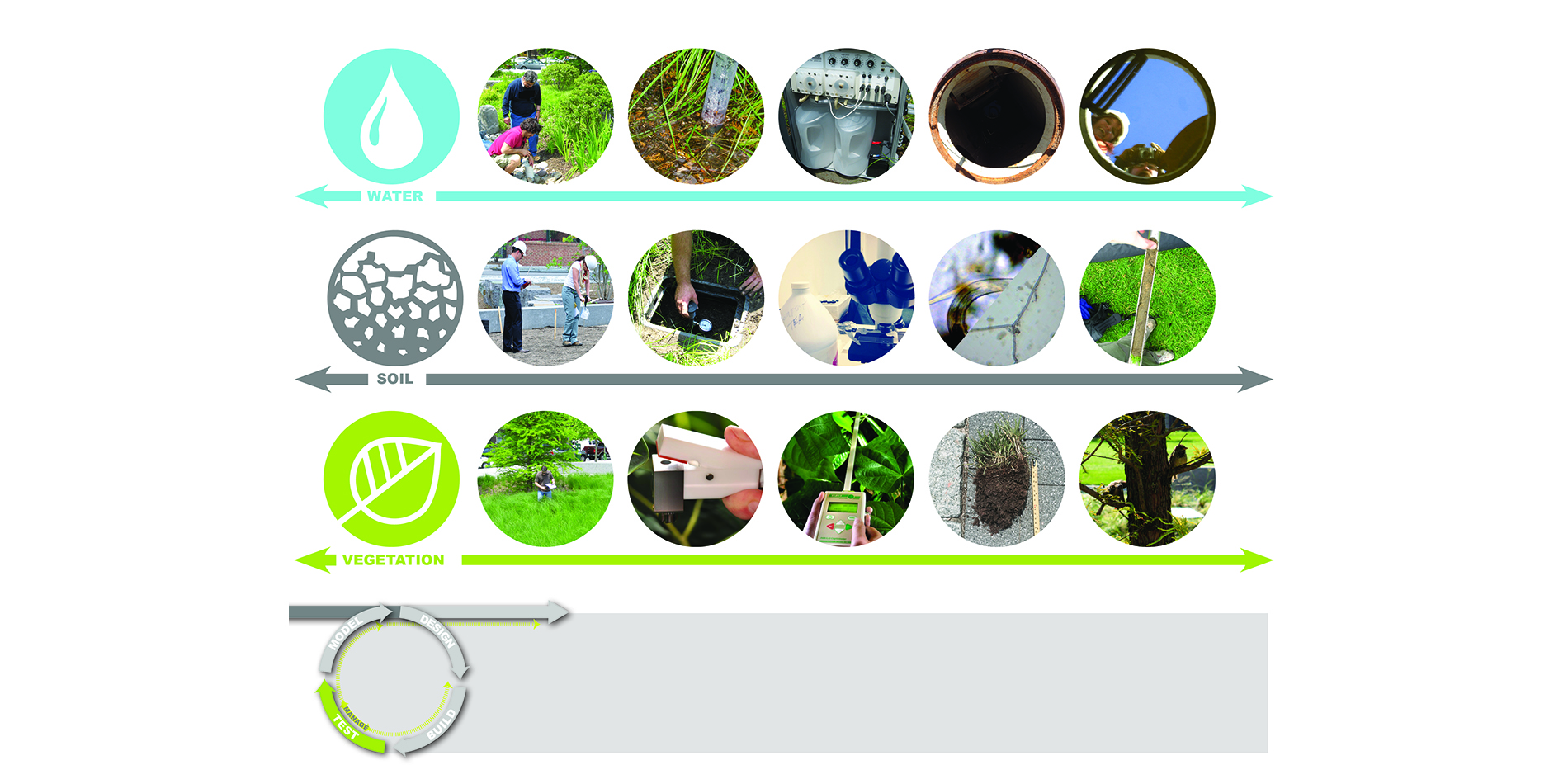
GSI RESEARCH METHODS:
For measuring the water balance, pressure transducers were used to measure water flow; for soil moisture and evaporation, tensiometers and soil moisture meters were used; and for vegetation transpiration, a leaf porometer and ceptometer were used.
Photo Credit: Barrett Doherty and Andropogon
Media: Please submit high-resolution image requests to images@asla.org.
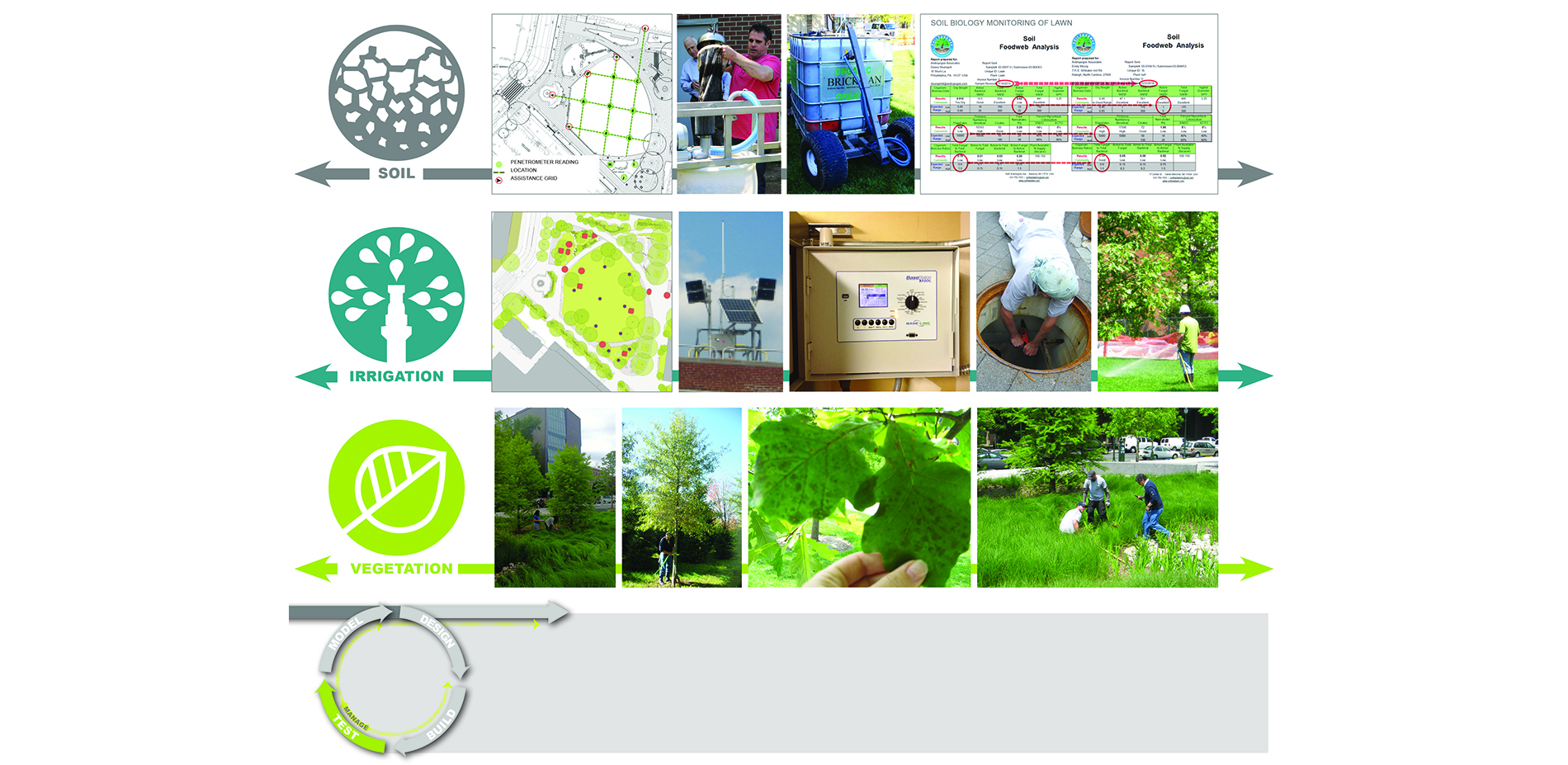
ADAPTIVE MANAGEMENT STRATEGY:
The site management included compost tea applications; irrigation monitoring; use of alternative de-icing salts; soil and plant monitoring; soil and turf remediation; and typical maintenance practices, such as regularly scheduled mulching, pruning, and mowing.
Photo Credit: Barrett Doherty and Andropogon
Media: Please submit high-resolution image requests to images@asla.org.
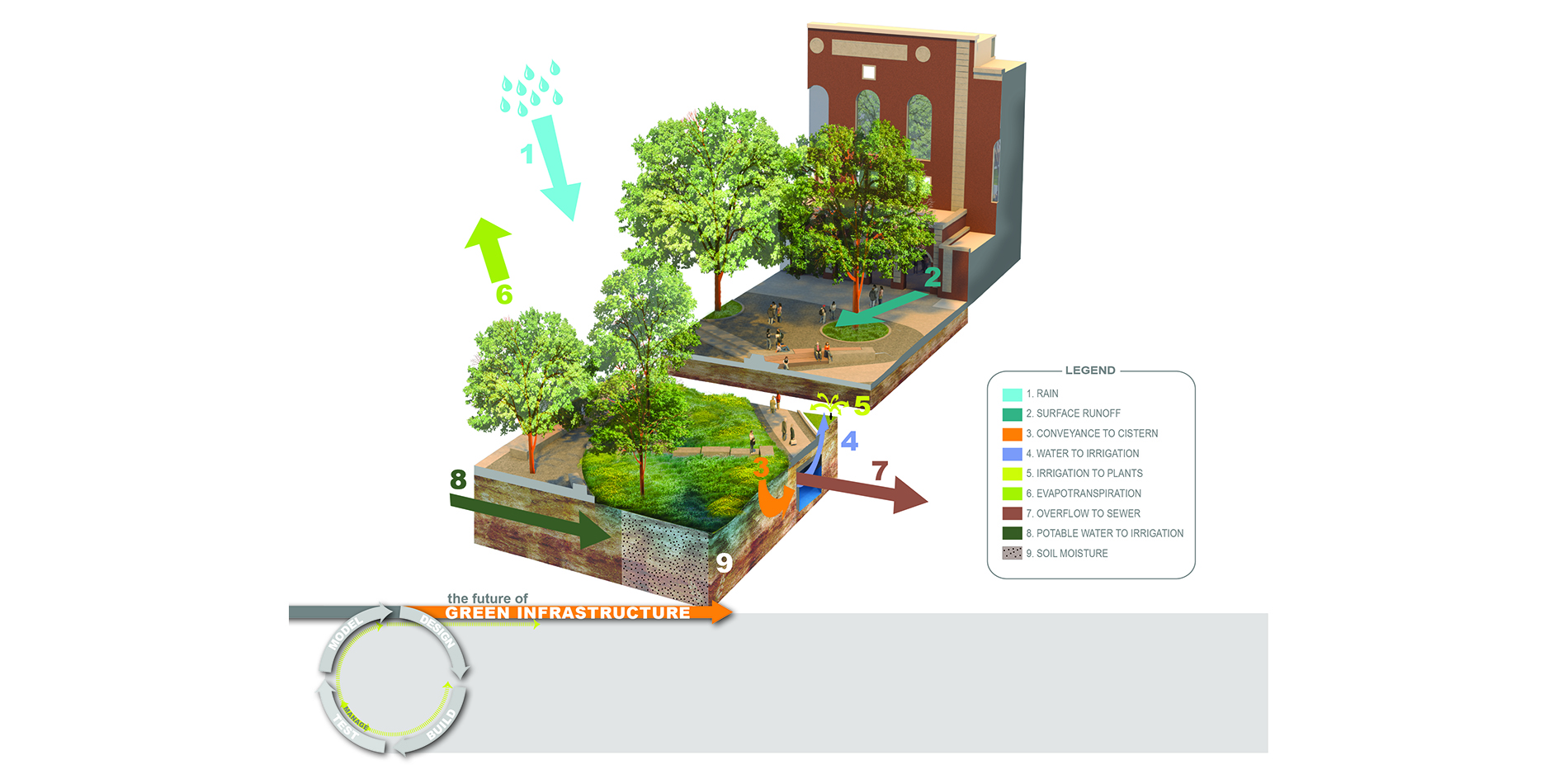
EXCEEDING EXPECTATIONS:
This urban park manages more than 3-times the stormwater runoff than the engineering models predicted. The site had the capacity to manage an approximately 2-year storm during Tropical Storm Andrea without overflows to the city sewer.
Photo Credit: Barrett Doherty and Andropogon
Media: Please submit high-resolution image requests to images@asla.org.
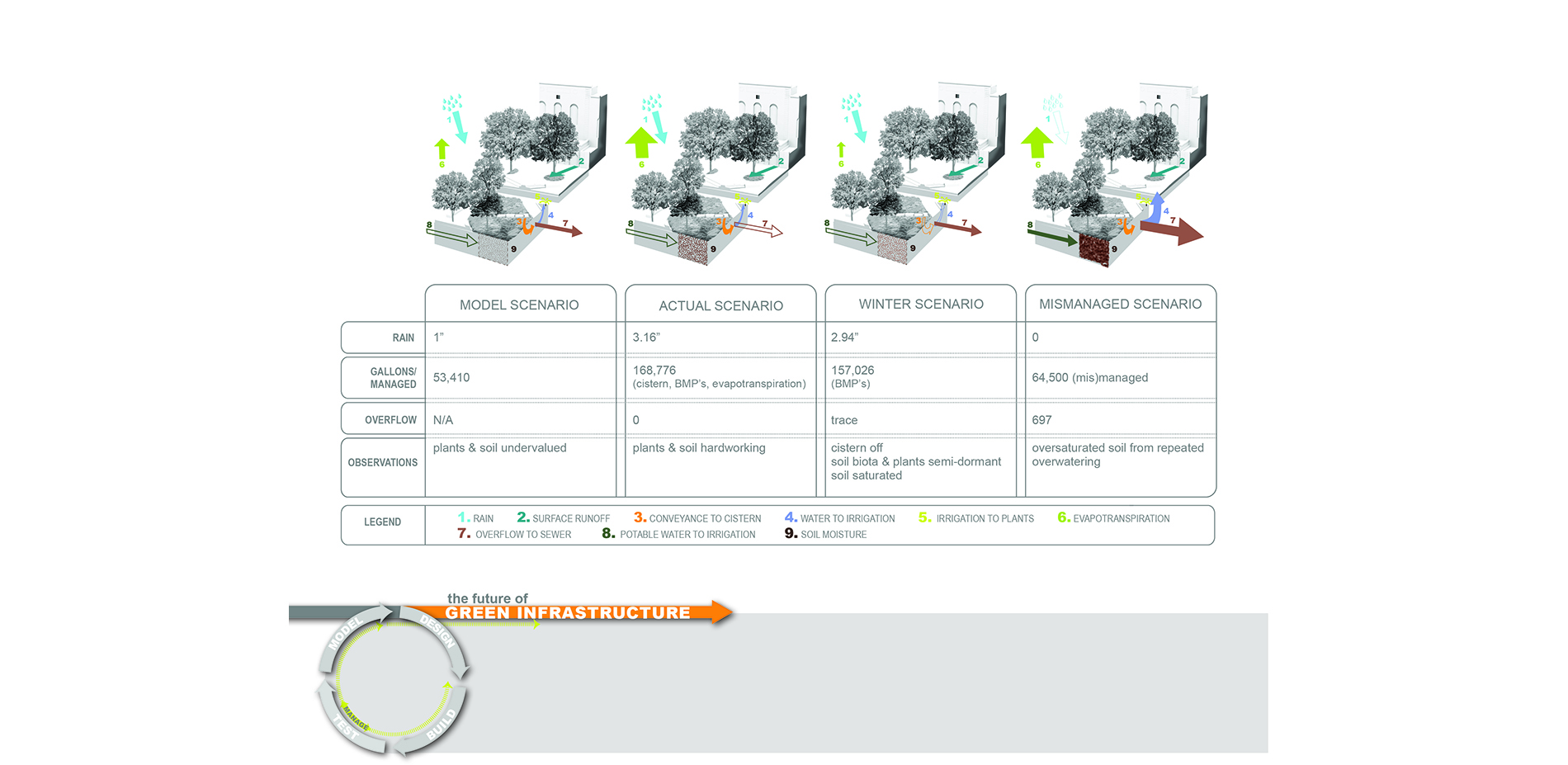
ADAPTIVE MANAGEMENT WORKS:
This site is performing better than engineering models predicted because of the high-performance design and the adaptive management strategies that were used to monitor soil and plant health, which informed site management practices that maintained their high performance.
Photo Credit: Barrett Doherty and Andropogon
Media: Please submit high-resolution image requests to images@asla.org.
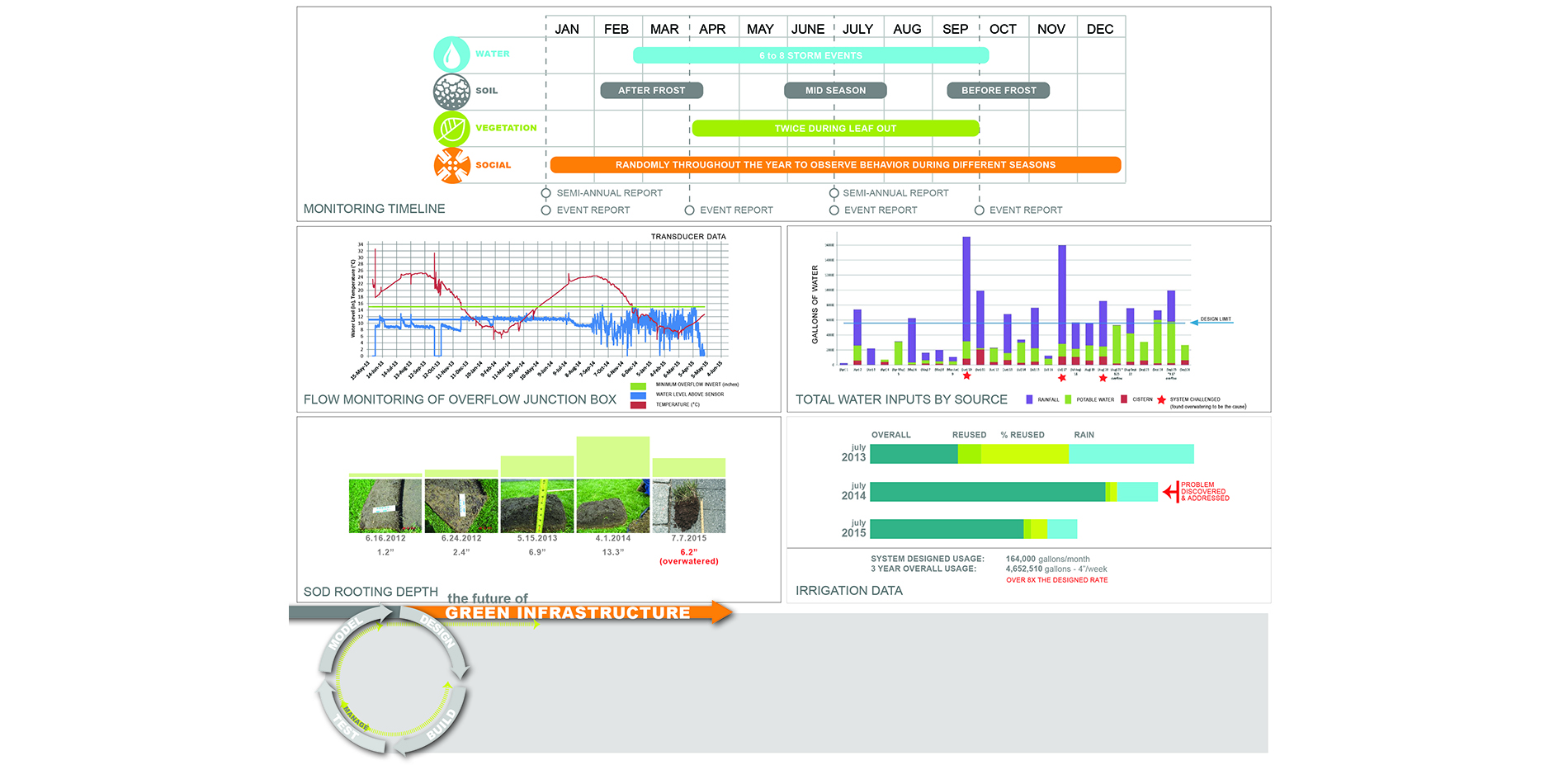
MONITORING IS CRITICAL:
Irrigation system monitoring is critical in preventing cistern overflows to the sewer and for sustainable water management. Active monitoring enabled the landscape managers to adjust the irrigation programs to ensure that overwatering was stopped and prevent further overflows.
Photo Credit: Barrett Doherty and Andropogon
Media: Please submit high-resolution image requests to images@asla.org.
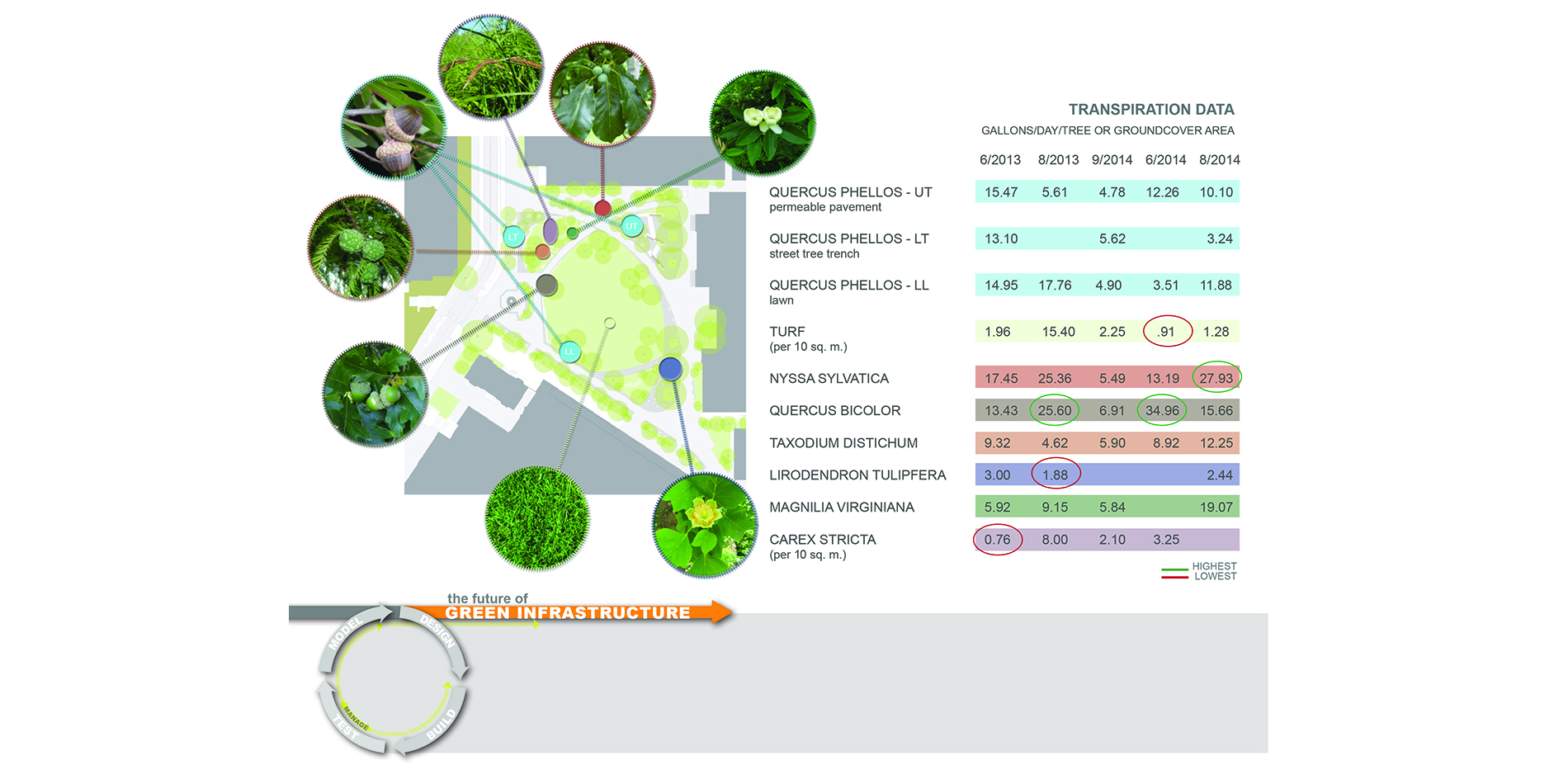
PLANTS ARE TRANSPIRATION WORKHORSES:
The majority of the plants are healthy and thriving. Transpiration measurements of young vegetation show that native floodplain species are transpiring up to 35 gallons of water per day per tree during the grown season.
Photo Credit: Barrett Doherty and Andropogon
Media: Please submit high-resolution image requests to images@asla.org.
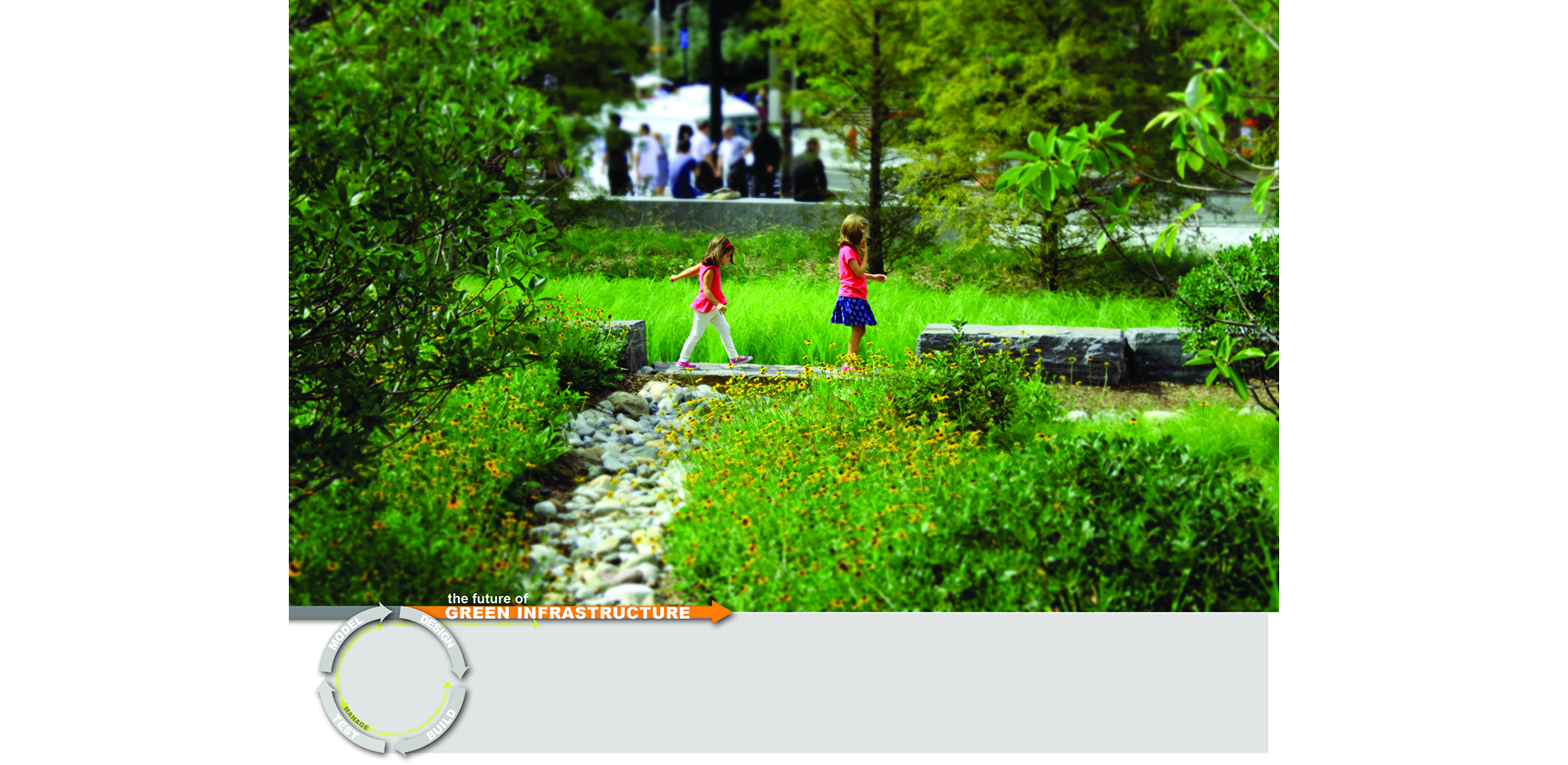
FUTURE OF GREEN INFRASTRUCTURE:
More research like this is needed to advocate for changes in GSI regulation and crediting incentivize GSI implementation, and increase cost-effectiveness, particularly for high-performance designs with effective adaptive management programs.
Photo Credit: Barrett Doherty and Andropogon
Media: Please submit high-resolution image requests to images@asla.org.


















